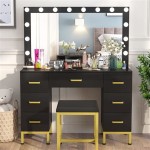What Is a Frameless Mirror?
A frameless mirror, as the name suggests, is a mirror without a traditional frame. Instead of being encased in wood, metal, or plastic, the mirror's edges are exposed, creating a clean, modern aesthetic. The reflective surface extends to the very edge of the glass, providing an uninterrupted, expansive view. This minimalist design allows the mirror to seamlessly integrate into various interior styles, from contemporary and minimalist to traditional and eclectic.
The construction of a frameless mirror involves highly polished edges. This process, often referred to as seaming or beveling, smooths and finishes the edges of the mirror, eliminating sharp corners and enhancing safety. Depending on the desired look, the edges can be flat polished, beveled at an angle, or even rounded. This attention to detail contributes to the mirror's sleek appearance and prevents chipping or cracking.
Frameless mirrors offer a versatile design element suitable for a multitude of applications. They are frequently used in bathrooms as vanity mirrors, providing a clear and functional reflection. In living rooms and bedrooms, they can serve as decorative pieces, reflecting light and creating a sense of spaciousness. Larger frameless mirrors can even be used to create dramatic focal points in hallways or dining areas.
Several factors distinguish frameless mirrors from their framed counterparts. The most obvious difference is the absence of a frame. This lack of a surrounding structure gives frameless mirrors a sleeker, more minimalist appearance. Framed mirrors, on the other hand, can add a decorative touch, complementing the overall style of a room with ornate carvings, vibrant colors, or metallic finishes. The choice between a framed or frameless mirror depends largely on personal preference and the desired aesthetic.
The installation process for frameless mirrors can vary depending on the size and weight of the mirror and the chosen mounting method. Smaller mirrors may be affixed using adhesive clips or specialized mirror mastic. Larger, heavier mirrors often require more robust mounting systems, such as J-bars or Z-clips. These systems utilize brackets that grip the edges of the mirror, providing secure support. Professional installation is often recommended for larger frameless mirrors to ensure proper placement and stability.
Maintaining the pristine appearance of a frameless mirror is relatively straightforward. Regular cleaning with a standard glass cleaner and a soft cloth is typically sufficient. Avoid using abrasive cleaners or materials that could scratch the reflective surface. For stubborn marks or fingerprints, a mixture of water and vinegar can be an effective cleaning solution.
The cost of a frameless mirror is influenced by several factors, including the size, thickness, and shape of the mirror, as well as the type of edgework. Generally, larger mirrors and those with more intricate edge detailing command a higher price. Custom-shaped mirrors, such as oval or arched designs, are typically more expensive than standard rectangular or square shapes. While frameless mirrors might initially seem simpler than framed options, the quality of the glass and the precision of the edgework significantly impact the final cost.
When selecting a frameless mirror, consider the intended location and purpose. For a bathroom vanity, a rectangular or oval mirror is a practical choice. In a living room or bedroom, a larger, statement-making mirror might be more appropriate. The thickness of the mirror is also an important consideration. Thicker mirrors are generally more durable and less prone to distortion. Finally, the edgework should complement the overall style of the space. A beveled edge adds a touch of elegance, while a flat polished edge offers a more contemporary look.
Frameless mirrors offer a variety of advantages. Their minimalist design allows them to seamlessly blend into any decor. They create a sense of spaciousness, particularly in smaller rooms, by reflecting light and visually expanding the area. Their versatility allows them to be used in various applications, from bathroom vanities to decorative wall pieces. Furthermore, their sleek appearance and ease of maintenance make them a practical and stylish choice for modern interiors.
Different types of glass can be used in the construction of frameless mirrors. Standard clear glass is the most common and provides a true reflection. Low-iron glass offers superior clarity and minimizes the greenish tint sometimes visible in the edges of standard glass. Tinted glass, available in various colors, can create a unique decorative effect. Mirrored glass, also known as two-way glass, allows visibility from one side while appearing as a mirror from the other, and is often used for specialized applications.
Beyond their functional purpose, frameless mirrors can contribute significantly to the overall aesthetics of a space. They can be strategically placed to highlight architectural features, reflect natural light, and create a sense of depth and dimension. Their unadorned simplicity allows them to serve as a neutral backdrop, complementing existing furniture and decor, or they can become a focal point, adding a touch of modern elegance to any room.
Framed Vs Frameless Bathroom Mirror Style Guide Abc Glass

Frameless Polished Edge Rectangle Mirror Better Bevel Made In Usa

How To Install A Mirror Without Frame Merrypad

Frameless Mirror With Led Backlight 0640 American Specialties

How To Decorate Your Bathroom With Frameless Mirrors Polaris Home Design

A Comparison Between Framed And Frameless Wall Mirror Which One Is Ideal For The Bathroom

Rectangular Bevelled Frameless Mirror Saint Gobain Flair Glass

Project Source H Beveled Frameless Wall Mirror In The Mirrors Department At Com

Concord Arched Frameless Full Length Mirror 170 X 80 Cm Daals

Galvin 24 X 36 Frameless Beveled Wall Mirror P1400 Lamps Plus








